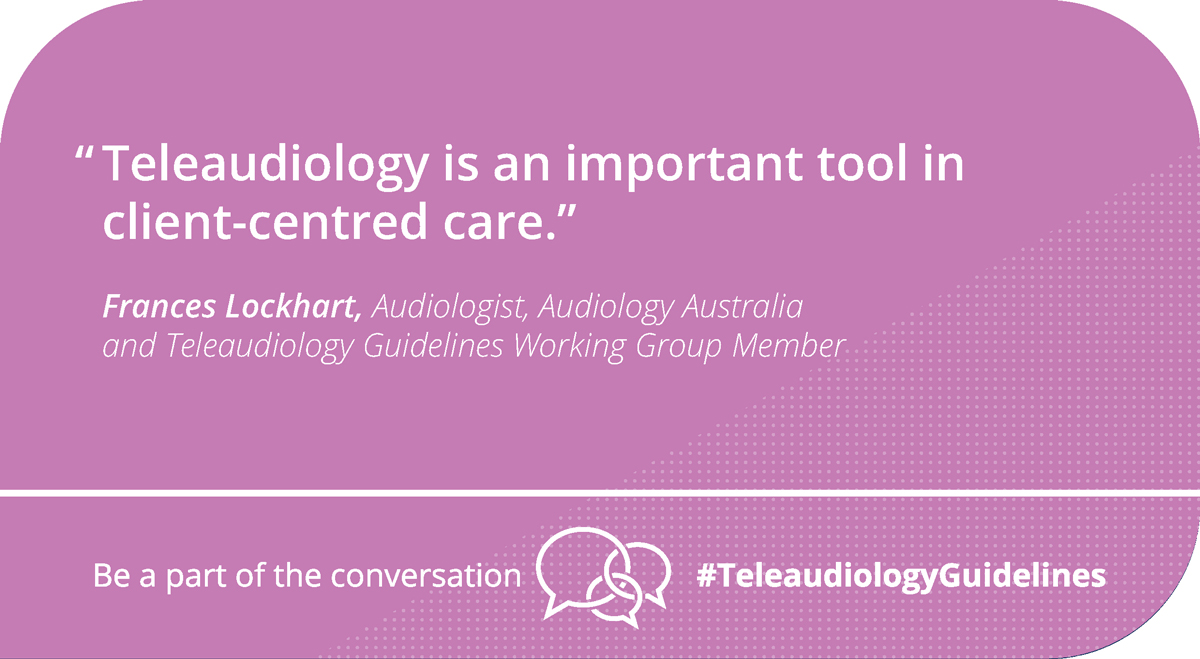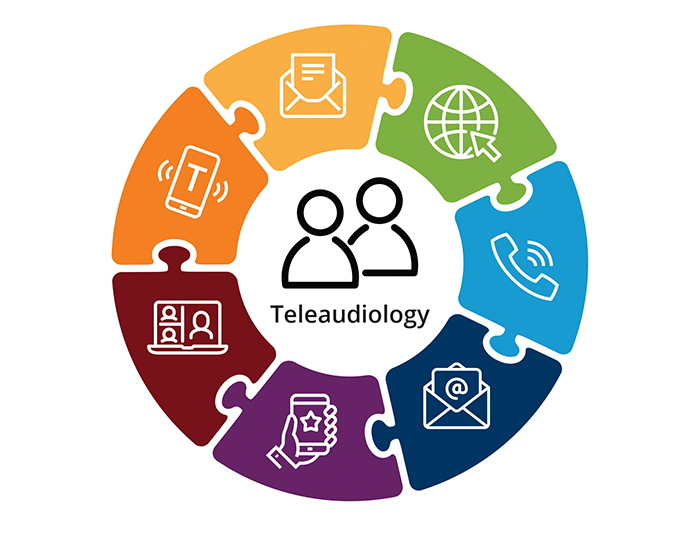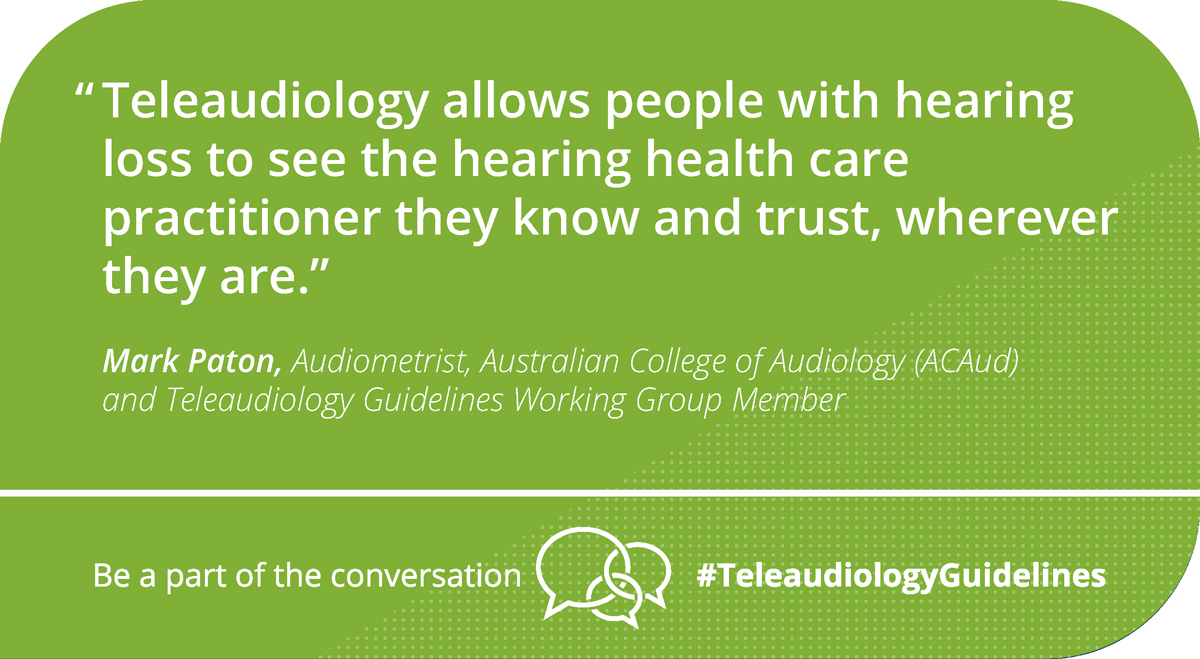Shaping the teleaudiology guidelines – what you said
Audiology Australia is developing guidelines for hearing health care practitioners…
Read More >

Teleaudiology complements in-person service delivery
Teleaudiology has a role to play in expanding options to ensure equity of service, particularly for clients with limited time, transport challenges or the ability to attend an appointment. Teleaudiology offers clients a way to access services from wherever they are, at a time that suits them.
Client-centred hearing health means empowering clients to exercise choice and tailoring services to their individual needs and circumstances.
Teleaudiology offers practitioners and providers a powerful platform to expand the options available to their clients and offer services to a wider range of people, without the need to travel to or between clinics in urban, regional and remote areas.
The hybrid service delivery model is perhaps one of the most effective approaches to integrating teleaudiology with in-person services. In this approach, assessment or rehabilitation programs are delivered using a mix of teleaudiology and in-person appointments which helps to sustain continuity of care.
A hybrid service delivery can take many forms. Initial appointments to discuss case history, goal setting or device discussions, for example, may be completed via a video call or by phone or email. These can then be followed by in-person appointments for activities such as impression taking, testing or initial hearing device adjustments.
Follow up and maintenance appointments can then be completed by teleaudiology.
As a service delivery tool, teleaudiology requires the same clinical decision making, care and therapeutic relationship as for in-person services, with the additional requirements of:
Benefits for the provider and client (consumer)
Teleaudiology gives the practitioner the ability to offer a truly client-centred delivery service, which is critical.
There are benefits for the provider and consumer alike.
Ian Rimes, consumer representative on the Teleaudiology Guidelines Working Group adds, “As a consumer, I welcome the option of having a remote consultation with my Audiologist assisted by a person to handle any technical issues. It is my choice to have a consultation in-person or by teleaudiology which is fantastic as it really does put the consumer firmly at the centre of the hearing service.”
From a provider’s perspective, Jane MacDonald, Audiologist and Teleaudiology Guidelines Working Group Member adds, “Teleaudiology gives providers a way to offer adaptable service delivery methods to support their clients’ clinical needs. It offers alternative options for clients to access services outside traditional in-person appointments and gives providers the means to increase the reach of their services – especially helpful in rural locations to reduce travel requirements for clients.”
Teleaudiology’s role in the future
Investing in telehealth skills development and exploring technology options can help providers prepare for the future. Teleaudiology enhances client-centered care, offers flexibility and can extend the reach of services.
The benefits of teleaudiology will affect both clients and practitioners at every touchpoint. If done well, it will ensure and maintain great outcomes and equity of access to high quality hearing care no matter where clients and practitioners live or work.
As you can see, teleaudiology is a great tool that expands the practitioners’ toolbox to increase flexibility and choice for consumers. It enhances rather than replaces in–person care and allows practitioners to tailor service delivery so clients can access care at a time and place that suits them.
We encourage you to get involved in the testing phase to help refine clarity, useability and relevance of the proposed guidelines and be a part of helping prepare audiology for the future. https://teleaudiologyguidelines.org.au/about-the-guidelines-project/
This opinion piece was first published on Audiology Australia LinkedIn page (Audiology Australia). It can also be shared direct from www.teleaudiologyguidelines.org.au via the share functions on the page.

Audiology Australia is developing guidelines for hearing health care practitioners…
Read More >
In 2021, the Teleaudiology Guidelines Working Group consulted the hearing…
Read More >
Teleaudiology usage over the past two years has surged as…
Read More >